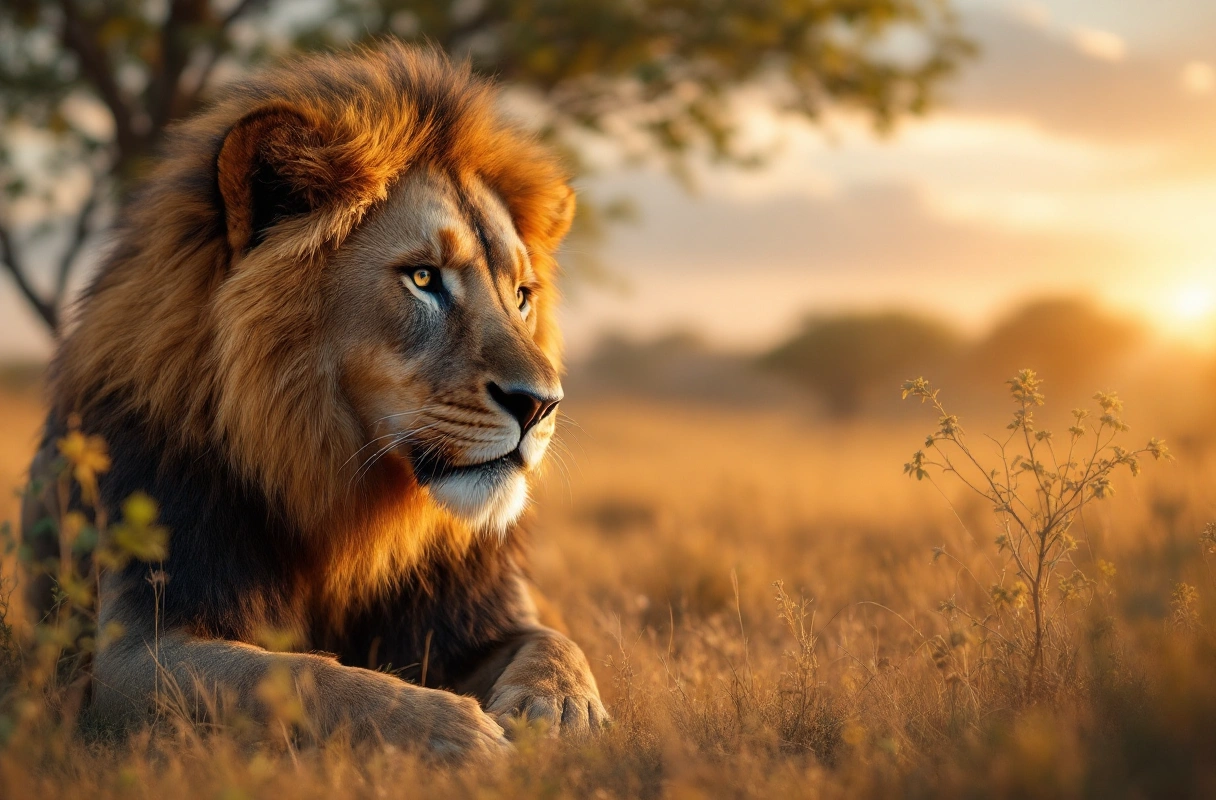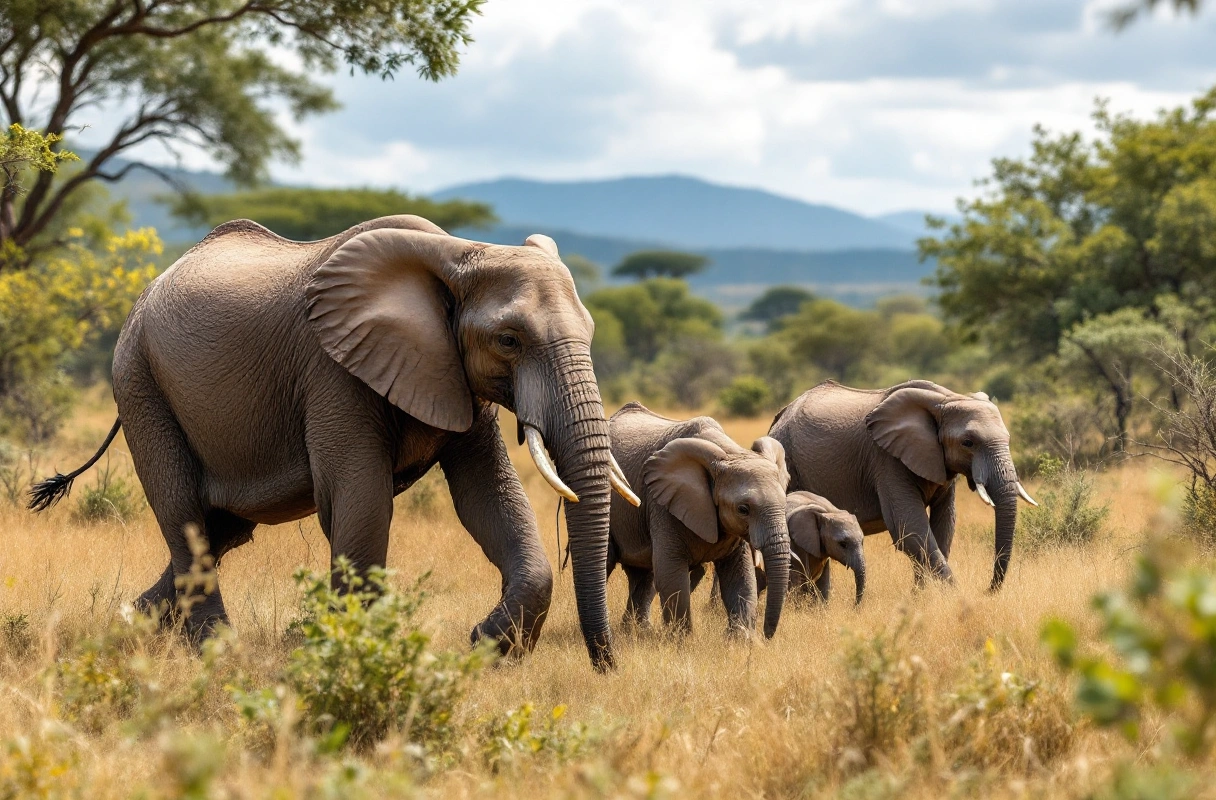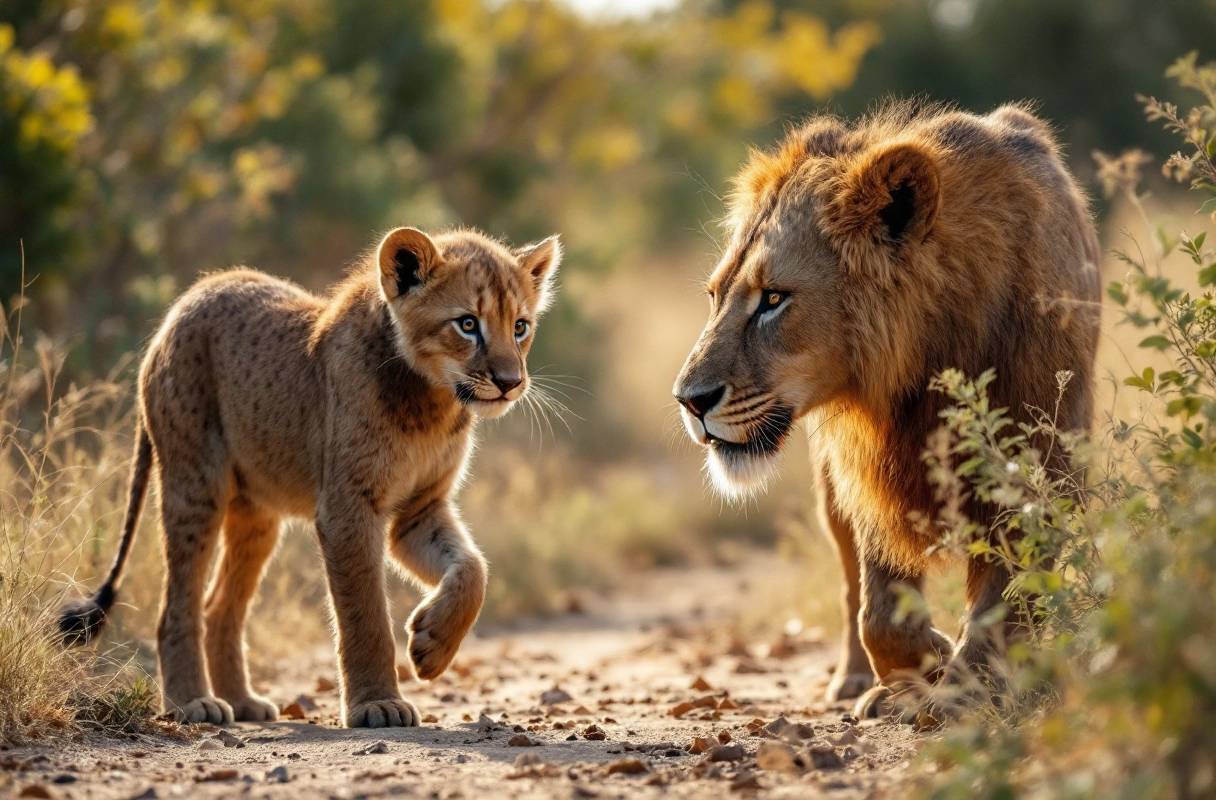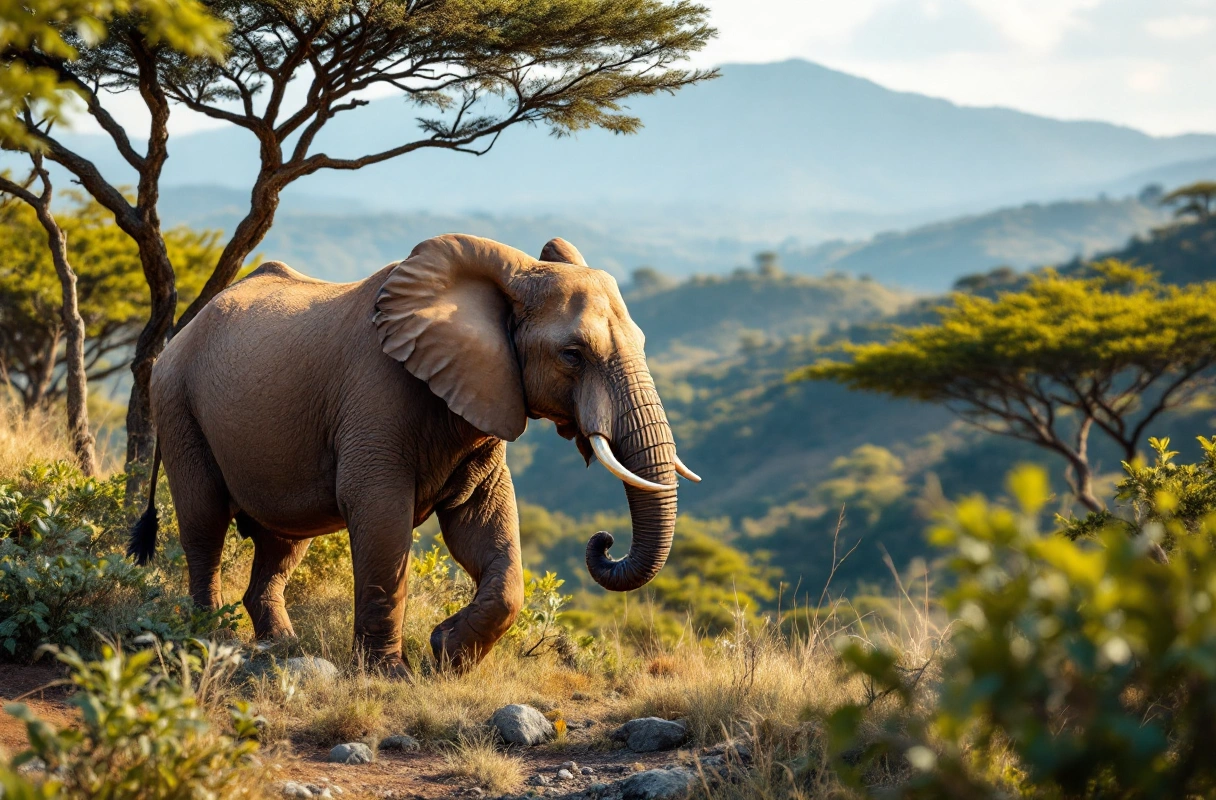Expert Tips for Photographing African Animals in the Wild
Photography in the wild, especially when capturing the majestic African animals, can be both exhilarating and challenging. The vast landscapes of Africa, combined with its diverse wildlife, create a unique opportunity for photographers to showcase the beauty of nature. Whether you are a seasoned professional or an amateur enthusiast, understanding the nuances of photographing these magnificent creatures is essential. With Kilimanjaro's wildlife as a focal point, this guide will provide expert tips to enhance your wildlife photography skills while ensuring that your experience is both respectful and rewarding.
Understanding African Wildlife
The Diversity of African Animals
Africa is home to some of the most iconic animals on the planet. From the Big Five—lion, leopard, rhinoceros, elephant, and Cape buffalo—to lesser-known species like the African wild dog and various antelope species, the continent boasts an incredible array of wildlife. This diversity not only provides a stunning backdrop for photography but also presents unique challenges. Each species has its own behavior, habitat, and patterns, making it crucial for photographers to adapt their techniques accordingly.
- Lion: Known as the "king of the jungle," lions are often found in prides and can be seen lounging in the sun or stalking prey.
- Elephant: These gentle giants are known for their intelligence and social behavior. Photographing elephants in their natural habitat can reveal their complex social structures.
- Cheetah: The fastest land animal, cheetahs can be a challenge to capture in action. Understanding their hunting habits is key to getting that perfect shot.
Ethical Considerations in Wildlife Photography
Photographing African animals comes with a significant responsibility. Ethical wildlife photography emphasizes respect for the animals and their habitats. It is crucial to prioritize the well-being of wildlife over the desire for a stunning image. Here are some ethical guidelines to consider:
- Keep your distance: Use telephoto lenses to capture close-up shots without disturbing the animals.
- Avoid feeding wildlife: Feeding animals can alter their natural behaviors and create dependency on humans.
- Respect nesting and breeding seasons: During these times, many animals are more vulnerable, and disturbing them can have detrimental effects.
Preparing for Your African Wildlife Photography Adventure
Research Your Destination
Before embarking on your journey, thorough research is essential. Understanding the local wildlife, their behaviors, and the best times for photography can significantly enhance your experience. When climbing Kilimanjaro, for instance, you will encounter various ecosystems, each hosting unique wildlife. Researching these ecosystems will help you anticipate the types of animals you might see and photograph.
- Trekking Routes: Familiarize yourself with popular routes and the wildlife commonly spotted along the way.
- Best Times to Visit: Certain seasons offer better visibility and opportunities for wildlife sightings. The dry season, for example, often leads animals to water sources, making them easier to photograph.
Equip Yourself with the Right Gear
Having the right equipment is crucial for capturing stunning images of African animals. Here’s a breakdown of essential gear to consider:
- Camera: A DSLR or mirrorless camera with manual settings will give you the flexibility needed for varying light conditions.
- Lenses: Telephoto lenses (200mm or longer) are ideal for wildlife photography, allowing you to capture distant animals without intruding on their space.
- Tripod: A sturdy tripod can help stabilize your camera, especially in low-light conditions or when using heavy lenses.
- Memory Cards and Batteries: Bring extra memory cards and batteries, as wildlife photography often involves lengthy waits for the perfect shot.
Pack for Comfort and Safety
Photography in the wild requires more than just gear. Comfort and safety should also be top priorities. Consider packing the following items:
- Comfortable Clothing: Dress in layers to adapt to changing weather conditions. Neutral colors can help you blend into the environment.
- First Aid Kit: Always carry a basic first aid kit, especially in remote areas.
- Water and Snacks: Staying hydrated and energized is crucial, particularly during long treks.
Top 10 African Animals You Must See While Climbing Kilimanjaro
When climbing Kilimanjaro, you will have the opportunity to see a variety of wildlife. Here are ten must-see African animals that should be on your photography checklist:
- Colobus Monkey: Known for their striking black and white fur, these monkeys are often found in the forests surrounding Kilimanjaro.
- Bushbuck: This elusive antelope can be spotted in the lower forested areas, offering unique opportunities for photography.
- Warthog: Often seen grazing, warthogs provide a humorous and fascinating subject for wildlife photography.
- Elephant: While not as common at high altitudes, elephants can occasionally be spotted in the foothills of Kilimanjaro.
- Zebra: These iconic animals can often be seen in the plains near Kilimanjaro, adding a striking contrast to the landscape.
- Giraffe: The Masai giraffe, with its unique patterns, can often be seen grazing on acacia trees, providing excellent photographic opportunities.
- Kilimanjaro Leopard: While elusive, spotting a leopard is a highlight for many photographers.
- African Grey Parrot: Known for their intelligence, these birds can be seen in the forested areas and make for stunning close-up shots.
- Buffalo: Often found in herds, buffalo can provide dramatic images against the backdrop of Kilimanjaro.
- Various Bird Species: From the vibrant Malachite Kingfisher to the majestic African Fish Eagle, the birdlife around Kilimanjaro is rich and diverse.
Techniques for Capturing Stunning Wildlife Photographs
Mastering Camera Settings
To capture the best images of African animals, understanding your camera's settings is crucial. Here are some essential settings to consider:
- Shutter Speed: Fast shutter speeds (1/1000 or faster) are ideal for freezing motion, especially when photographing animals in action.
- Aperture: A wide aperture (f/2.8 to f/5.6) will create a shallow depth of field, allowing your subject to stand out against a blurred background.
- ISO Settings: Adjust your ISO according to the light conditions. In low light, a higher ISO will help you maintain fast shutter speeds.
Composition Techniques
Effective composition can elevate your wildlife photographs. Here are some techniques to consider:
- Rule of Thirds: Place your subject off-center to create a more dynamic image. This technique leads the viewer's eye through the photograph.
- Leading Lines: Use natural lines in the landscape, such as rivers or paths, to guide the viewer's eye towards the subject.
- Framing: Use natural elements like branches or foliage to frame your subject, adding depth and interest to the image.
Patience and Timing
Wildlife photography requires a great deal of patience. Animals may take time to appear, and capturing them in their natural behaviors often requires waiting silently. Here are some tips for maximizing your chances of a successful shot:
- Arrive Early: Many animals are most active during the early morning or late afternoon. Arriving at your location during these times can lead to more sightings.
- Stay Still: Movement can scare animals away. Remain as still and quiet as possible to increase your chances of capturing them in action.
Common Mistakes to Avoid
Overlooking the Background
One common mistake many photographers make is neglecting the background of their shots. A cluttered or distracting background can detract from the beauty of the subject. Always be aware of your surroundings and adjust your position if necessary to ensure a clean background.
Not Paying Attention to Light
Lighting is a crucial element in photography. Shooting during harsh midday sun can lead to washed-out images. Instead, aim for the golden hours—early morning or late afternoon—when the light is softer and more flattering.
Getting Too Close
While it may be tempting to get up close for a shot, this can disturb the animals and lead to dangerous situations. Always maintain a respectful distance and use appropriate lenses to capture your subjects without intruding.
The Intersection of Wildlife Photography and Conservation
As wildlife photographers, we have a unique opportunity to raise awareness about conservation issues. By showcasing the beauty of African animals, we can inspire others to appreciate and protect these magnificent creatures. Consider the following:
- Sharing Your Work: Use your photographs to educate others about the importance of wildlife conservation. Social media platforms can be powerful tools for spreading awareness.
- Supporting Conservation Efforts: Consider donating a portion of your photography profits to wildlife conservation organizations. This can help protect habitats and support endangered species.
Explore More with Banana Slug Club
As you embark on your journey to photograph African animals, remember that your passion for nature and wildlife is shared by many. The Banana Slug Club is dedicated to fostering a love for the environment, science, and the incredible world of nature. Whether you are a nature enthusiast, a student, or a curious kid excited about learning more, we provide valuable resources to deepen your understanding of the natural world.
Visit our website for more information, resources, and to connect with others who share your passion for wildlife and conservation. Join us in celebrating the beauty of African animals and learning how we can all contribute to their preservation.
By applying the tips and techniques outlined in this article, you can enhance your wildlife photography skills while respecting the majestic African animals and their habitats. Happy photographing!



